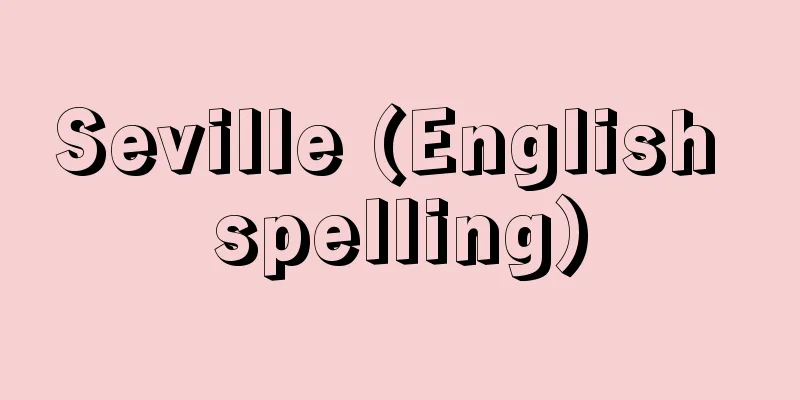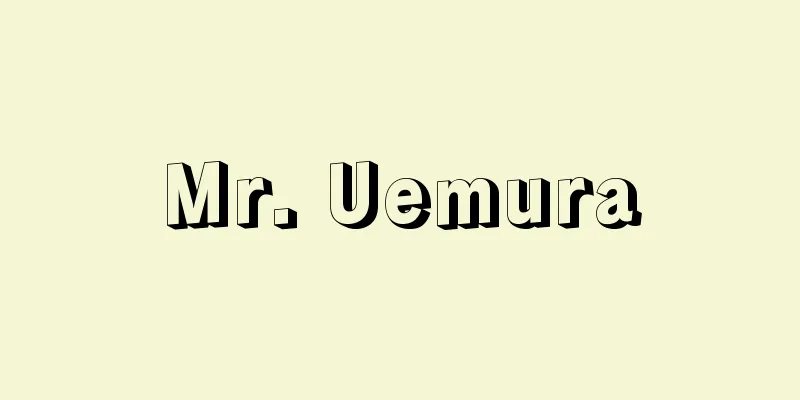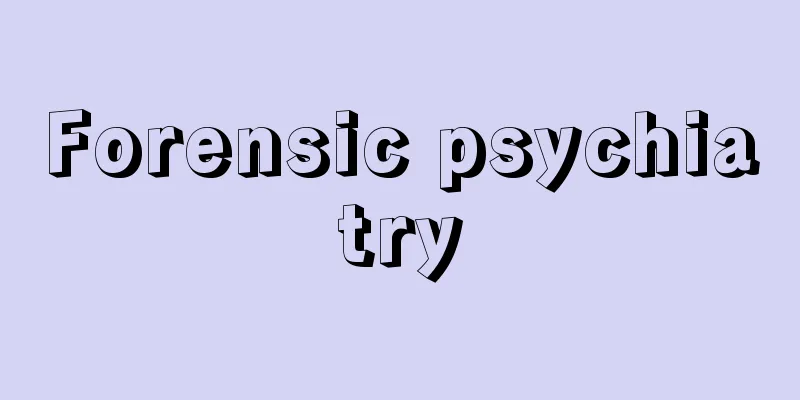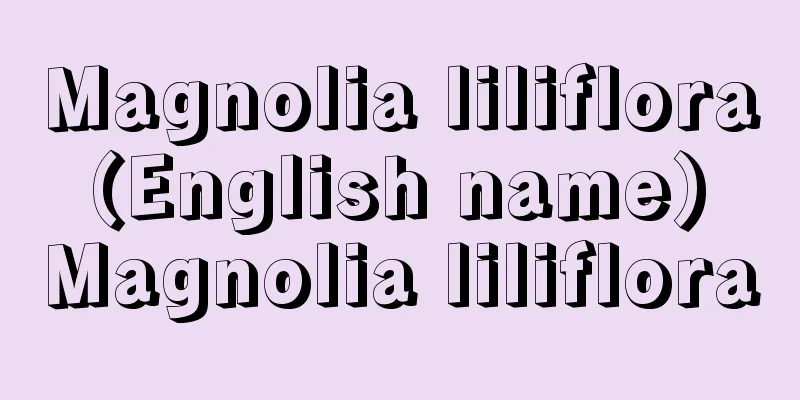Labor Union Law - Labor Union Law
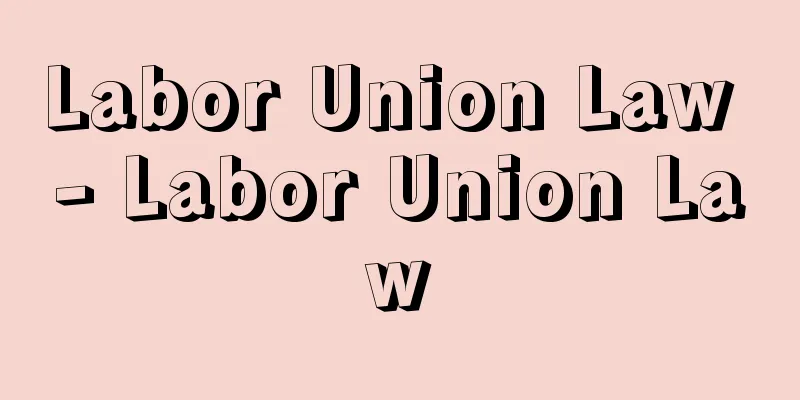
|
There are broad and narrow definitions of "labor union law." Labor Union Law in a broad senseThe broad definition of labor union law is the law concerning labor unions with regard to their internal relations and relations with employers. It is also called the Labor Organization Law, Collective Labor Law, Labor-Management Relations Law, etc. In Japan, the Labor Union Law refers to the law enacted in 1949 (Showa 24), but the laws concerning labor unions are not limited to this law. In addition to the Labor Relations Adjustment Law, the Law Concerning Labor Relations of Administrative Execution Corporations (Gyoroho), the Local Public Enterprise Labor Relations Law (Chikoroho), and even the National Public Service Law and the Local Public Service Law are all included in the broad definition of labor union law as laws governing collective labor relations for public servants. [Hiroshi Terada] Labor Union Law in the Narrow SenseThe Labor Union Law in the narrow sense is a law that clarifies the specific content of the right to organize, the right to collective bargaining, and the right to collective action guaranteed by Article 28 of the Japanese Constitution, and also provides for the organization and internal management of labor unions, the prohibition of employers' acts violating union rights and remedies for such acts, and labor agreements obtained through union activities. Law No. 174 of 1949. Abbreviated as Labor Union Law. Here, we will discuss Japan's Labor Union Law in the narrow sense of the term. [Hiroshi Terada] HistoryBefore World War II, around 1920 (Taisho 9), against the backdrop of the rise of the labor movement, the Ministry of Agriculture and Commerce and the Ministry of the Interior drafted nearly 20 labor union bills, and the government also submitted bills to the Diet in 1926 and 1931 (Showa 6), but none of them saw the light of day due to strong opposition from capitalists. On October 11, 1945 (Showa 20), immediately after Japan's defeat in the war, GHQ (Supreme Commander for the Allied Powers) instructed the Japanese government to carry out five major reforms: (1) women's liberation, (2) promotion of labor union formation, (3) liberalization of school education, (4) liberation from autocratic government, and (5) democratization of the economy. The instruction to encourage the formation of labor unions in order to "protect workers from exploitation and abuse and to acquire the prestige to have a strong voice in improving living standards" predicted that the policy of liberation of the labor union movement was at the core of Japan's democratization policy, and therefore predicted that the occupation policy would actively move toward protecting and supporting the labor union movement. Various laws and systems that had suppressed labor union activities, such as the Peace Preservation Law and the Special Higher Police Law, were also abolished. The government established the Labor Legislation Council to consult on the drafting of a labor union bill, and the old Labor Union Law, enacted in December 1945 based on its report, was independently drafted, referring to the prewar draft by the Social Affairs Bureau of the Ministry of Home Affairs, even though it was under the strong direction of the occupying forces. It defined all "persons who live on wages, salaries or other income equivalent thereto, regardless of the type of occupation" as workers under the Labor Union Law, and guaranteed the right to organize and the right to strike equally to factory workers, civil servants and public officials, which was crucially different from the original draft by the Social Affairs Bureau, and was a groundbreaking act that reflected the democratic ideas of the postwar period. Although there were exceptions to the prohibition on organizing for police officers, firefighters and prison staff, it provided criminal and civil exemptions for labor disputes, prohibited employers from treating workers unfairly in relation to union formation, membership or union activities, and prohibited Yellow Dog contracts with criminal penalties, and established a system of normative effect and general binding force for labor agreements. In July 1948, against the backdrop of a shift in occupation policy, Cabinet Order No. 201 was enacted, completely banning labor disputes among civil servants and placing restrictions on the right to collective bargaining. Cabinet Order No. 201 was succeeded by the amendment of the National Public Service Act and the enactment of the Public Enterprise Labor Relations Act in December of the same year, stripping public servants of their right to strike. As a result, the application of the Labor Union Act to public servants was also eliminated or reduced. In June 1949, the old Labor Union Law was completely revised. The purpose of the revision was changed from "To improve the status of workers and contribute to the prosperity of the economy by guaranteeing the right to organize and by protecting and supporting the right to collective bargaining" (Article 1) in the old Labor Union Law to "To improve the status of workers by promoting equality in negotiations between workers and employers." As shown by this, the purpose of the revision was to form a labor-management order with collective bargaining as the core of labor-management relations, on the premise of respecting management rights. The main changes in the current law that were thus established are as follows: (1) By emphasizing the "autonomy" of labor unions, the scope of representation of employers' interests was expanded, and management groups were brought into the capital side, excluding unions from company operations. For the same reason, the company's payment of the salaries of full-time union employees was prohibited, as it was considered to be "expense support." (2) In order to establish "democracy," the Act specified in detail what items must be included in union regulations, strengthening legal restrictions on the internal operations of unions, and classifying unions with regulations that contradicted the Act as "non-legal unions" and denying them certain protections under the Labor Union Law and the Labor Relations Adjustment Law. (3) The Act amended the policy of imposing penalties on employers for discriminatory treatment due to union activities and introduced an unfair labor practice system that incorporates the principle of restitution. (4) It opened the way for one party to be able to terminate a labor agreement after it had expired by expressing its intention, and as a result, employers can now terminate agreements that are automatically extended and unilaterally reduce their workforce. Labor unions opposed the Act, viewing it as an infringement of vested rights and a law suppressing unions, but the Act was passed. It was later partially revised, but has since taken root and remains in place to this day. [Hiroshi Terada] ContentsThe Labor Union Law consists of five chapters: General Provisions, Labor Unions, Labor Agreements, Labor Committees, and Penal Provisions. The contents are as follows: (1) It provides for criminal and civil exemption for legitimate labor disputes, collective bargaining, and other solidarity activities by labor unions (Article 1, Paragraph 2 and Article 8). (2) It stipulates the requirements for the purpose and "autonomy" of labor unions (Article 2), and requires unions to be "democratically" managed (Article 5). Unions that meet these conditions are considered to be legal unions, and can apply for relief in the event of unfair labor practices. (3) It provides detailed provisions on unfair labor practices, concretely guarantees the right to organize, and prohibits employers from engaging in unfair labor practices (Article 7). (4) It establishes the requirements and validity period of labor agreements, as well as normative effect and general binding force systems (Articles 14 and following). (5) It stipulates the organization and authority of the Labor Committee, which is responsible for dispute mediation and the review of unfair labor practices (Articles 19 and following). [Hiroshi Terada] "Commentary on Labor Union Law, vol. 1 and 2, edited by the University of Tokyo Labor Law Study Group (1980, 1982, Yuhikaku)" ▽ "Labor Union Law, 2nd Edition, by Nishitani Satoshi (2006, Yuhikaku)" ▽ "New Basic Law Commentary: Labor Union Law (Hogaku Seminar Supplement)" edited by Nishitani Satoshi, Michiyuki Tetsuya, and Nakakubo Yuya (2011, Nippon Hyoronsha)" [References] | | | | | | | | |Source: Shogakukan Encyclopedia Nipponica About Encyclopedia Nipponica Information | Legend |
|
広義と狭義の「労働組合法」がある。 広義の労働組合法広義の労働組合法とは、労働組合の内部関係と対使用者関係に関する労働組合をめぐる法である。労働団体法、集団的労働法、労使関係法などとよばれることもある。日本で労働組合法といえば、1949年(昭和24)に制定された法律をさすが、労働組合に関する法は同法に限定されるわけではなく、労働関係調整法はもちろん、行政執行法人の労働関係に関する法律(行労法)、地方公営企業労働関係法(地公労法)、さらに国家公務員法、地方公務員法も公務員の集団的労働関係の法として、広義の労働組合法に含まれる。 [寺田 博] 狭義の労働組合法狭義の労働組合法は、日本国憲法第28条で保障された団結権、団体交渉権、団体行動権の具体的内容を明らかにするとともに、労働組合の組織・内部運営、使用者による団結侵害行為の禁止とその救済、団結活動を通じて獲得した労働協約などについて規定した法律をいう。昭和24年法律第174号。略称、労組法。ここでは、この狭義の労働組合法としての日本の労働組合法について述べる。 [寺田 博] 沿革第二次世界大戦前、1920年(大正9)ごろから労働運動の台頭を背景に農商務省、内務省が20近くの労働組合法案を作成し、政府も1926年と1931年(昭和6)に法案を議会に提出したが、資本家の強い反対によりいずれも日の目をみることはなかった。敗戦直後の1945年(昭和20)10月11日、GHQ(連合国最高司令部)は、(1)婦人の解放、(2)労働組合結成の促進、(3)学校教育の自由化、(4)専制政治からの解放、(5)経済の民主化、の五大改革を日本政府に指示した。「搾取と酷使から労働者を保護し且(か)つ生活水準の向上のため有力な発言権を得るための威信を獲得」するために労働組合結成を促す指示は、労働組合運動解放政策が日本の民主化政策の中軸に置かれていること、したがって占領政策が積極的に労働組合運動の保護助成に向かうことを予測させた。治安維持法、特別高等警察など労働組合活動を弾圧していた諸法令、制度も撤廃された。 政府は労務法制審議会を設置し、労働組合法案の作成を諮問、その答申に基づいて1945年12月に制定された旧労働組合法は、占領軍の強い指示のもとにありながらも、戦前の内務省社会局案を参照し独自に作成されたものである。「職業ノ種類ヲ問ハズ賃金、給料其(そ)ノ他之(これ)ニ準ズル収入ニ依(よ)リ生活スル者」すべてを労組法上の労働者としてとらえ、工・職・官公吏に等しく団結権、争議権を保障した点で社会局原案とは決定的に異なり、戦後の民主主義思想を反映した画期的なものであった。警察官、消防職員、監獄職員については例外的に団結禁止規定が置かれていたが、争議行為に対する刑事・民事免責を規定したほか、使用者による労働者の組合結成・加入や組合活動に対する不利益取扱い、黄犬(おうけん)契約を刑罰をもって禁止し、労働協約の規範的効力や一般的拘束力の制度を設けた。 1948年7月、占領政策の転換を背景に政令二〇一号が制定され、公務員の争議行為が全面的に禁止されて、団体交渉権に制限が加えられた。政令二〇一号は、同1948年12月の国家公務員法改正、公共企業体労働関係法の制定に引き継がれ、官公労働者の争議権が剥奪(はくだつ)された。これに伴い官公労働者に対する労働組合法の適用も排除もしくは縮小された。 1949年6月、旧労働組合法は全面的に改正される。その目的が、旧労組法の「団結権ノ保障及団体交渉権ノ保護助成ニ依リ労働者ノ地位ノ向上ヲ図リ経済ノ興隆ニ寄与スル」(1条)ことから、改正労組法の、「労働者が使用者との交渉において対等の立場に立つことを促進することにより労働者の地位を向上させること」に改められたことに示されるように、改正の目的は、経営権の尊重を前提としたうえで、労働者と経営者間に団体交渉を主軸とする労使関係秩序を形成することにあった。こうして成立した現行法のおもな改正点は次のとおりである。(1)労働組合の「自主性」を強調することで、使用者の利益代表の範囲を拡大して資本の側に管理職グループを取り込み、会社の業務から組合を排除した。同様の理由で組合専従者の給与の会社負担を「経費援助」にあたるとして禁止した。(2)「民主性」確立を理由に組合規約の必要記載事項を詳細に規定し、組合の内部運営への法規制を強めるとともに、それに反する規約をもつ組合を「法外組合」として労組法・労働関係調整法上の一定の保護の付与を否定した。(3)組合活動を理由とする使用者による差別待遇に対する科罰主義を改め、原状回復主義を内容とする不当労働行為制度を導入した。(4)期限到来後の労働協約を一方当事者の意思表示によって解約できる道を開き、使用者はこれに基づき自動延長中の協約を解約し、一方的に人員整理を行うことができるようになった。労働組合は既得権の侵害、組合弾圧法として反対したが、同法は成立する。その後、部分的に改正されたが、定着し、現在に至っている。 [寺田 博] 内容労働組合法は、総則、労働組合、労働協約、労働委員会、罰則の5章からなる。その内容は次のとおりである。(1)労働組合による正当な争議行為・団体交渉その他の団結活動に対する刑事・民事上の免責を定める(1条2項・8条)。(2)労働組合の目的と「自主性」に関する要件を定め(2条)、組合の「民主的」運営を要求している(5条)。これらの条件に適合する組合を法内組合としてとらえ、不当労働行為があった場合、救済の申立てを行うことができる。(3)不当労働行為について詳細な規定を置いて団結権の具体的保障を図り、使用者に不当労働行為を禁止する(7条)。(4)労働協約の要件・有効期間や規範的効力・一般的拘束力制度を設ける(14条以下)。(5)争議調整・不当労働行為事件などの審査を担当する労働委員会の組織・権限を定める(19条以下)。 [寺田 博] 『東京大学労働法研究会編『注釈労働組合法』上下(1980、1982・有斐閣)』▽『西谷敏著『労働組合法』第2版(2006・有斐閣)』▽『西谷敏・道幸哲也・中窪裕也編『新基本法コンメンタール 労働組合法(別冊法学セミナー)』(2011・日本評論社)』 [参照項目] | | | | | | | | |出典 小学館 日本大百科全書(ニッポニカ)日本大百科全書(ニッポニカ)について 情報 | 凡例 |
>>: Labor Union Promotion Association
Recommend
Iojima
The former name of a town (Iojima-cho) in Nishiso...
Tenebrio molitor
...The larvae are yellowish brown and semi-cylind...
Narasimhavarman I
...Successive kings followed over the next two ce...
cyclotron
A charged particle accelerator that uses radio fr...
Weisse Rose
...However, as a whole, the movement could no lon...
Vltava [river] - Vltava
A river in western Czech Republic. It is a tributa...
Vollard, Ambroise
Born: 1865. Saint-Denis, Reunion Island Died in 19...
Carillon
A carillon is a set of bells. It developed in the ...
Womnicki, T. - About Wom
...The spirit of boycotting all theaters that had...
edible frog (English spelling) ediblefrog
...This genus is characterized by its five-digit ...
Gathering - Shuugou
When clearly defined objects such as desks and ch...
Adhan
A call to Muslims to pray (salat) five times a day...
Palm cockatoo (English spelling)
...The white-colored Great Cockatoo (illustration...
Jean Gaspard Félix Lacher Ravaisson‐Mollien
1813‐1900 French philosopher and administrator. In...
Bow-shaped pattern - Kyujomon
A fingerprint with an arch-shaped ridge running fr...



